24.11.2017
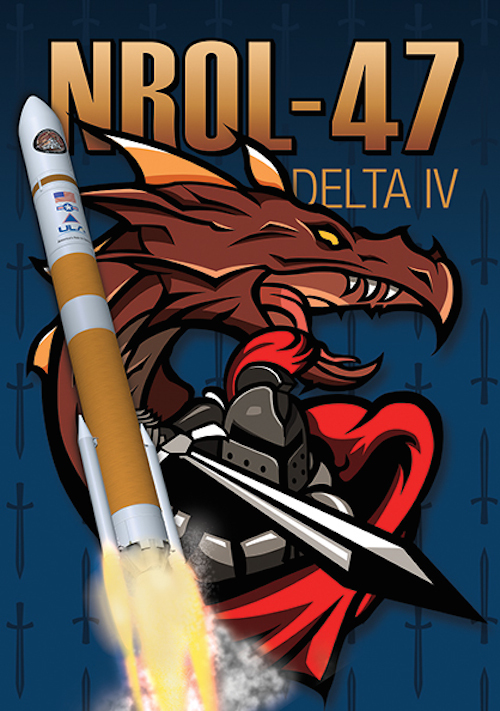
- Rocket: Delta IV Med+ (5,2)
- Mission: NROL-47
- Launch Date: Wednesday, Dec. 13, 2017
- Launch Time: TBD
- Live Broadcast: Check back for viewing information
- Launch Location: Space Launch Complex 6, Vandenberg Air Force Base, California
Launch Notes: The NROL-47 mission will mark ULA’s ninth launch of 2017 and 27th for the National Reconnaissance Office. NROL-47 will be the 36th flight of the Delta IV rocket since its inaugural launch 2002.
Quelle: ULA
---
Update: 7.12.2017
.
Delta 4 launch from California slips to January

The launch of a top secret National Reconnaissance Office spy satellite from Vandenberg Air Force Base in California has been pushed back from Dec. 13 until no earlier than Jan. 10 to complete software validation on the Delta 4 rocket’s new avionics system, United Launch Alliance announced Wednesday.
The launch company said officials delayed the mission “to perform additional validation of the software and systems associated with Common Avionics.”
In a statement released Wednesday, ULA said the common avionics are a new suite of avionics, flight software and ground systems designed to fly on both of ULA’s current-generation rockets — the Atlas 5 and Delta 4. The modified avionics system replaces earlier-generation software and equipment that flew on Atlas 5 and Delta 4 rockets, which were developed by Lockheed Martin and Boeing before the aerospace contractors merged their launch divisions to form ULA in 2006.
“This upgraded command and control system was designed to reduce cost and improve reliability,” ULA said.
The Delta 4 rocket is set to loft a classified payload for the NRO, the U.S. government’s spy satellite agency. The mission is known by the codename NROL-47.
The launch will be the first time the common avionics systems have flown on a Delta 4 rocket.
Ground crews at Vandenberg have stacked the two-stage Delta 4 rocket at Space Launch Complex-6 overlooking the Pacific Ocean. The NROL-47 launch will use the “5,2” version of the Delta 4 with a five-meter-diameter payload fairing and two solid rocket boosters attached on each side of the hydrogen-fueled first stage.
The mission is expected to loft a radar surveillance satellite to gather all-weather, day-and-night imagery for analysis by U.S. intelligence agencies.
It will be the last launch of a medium-lift, single-core version of the Delta 4 rocket from Vandenberg Air Force Base. ULA is retiring the “single-stick” Delta 4 family in favor of the less expensive Atlas 5, before eventually replacing both rockets with the next-generation Vulcan launcher.
Two more single-core Delta 4s are slated to launch from Cape Canaveral.
The heavy-lift version of the Delta 4, comprising three of the rocket’s first stages bolted together, will remain in service through at least the early 2020s to deploy the NRO’s most massive satellites. Those payloads weigh too much for the Atlas 5 or SpaceX’s Falcon 9 rocket, the two other launch vehicles currently certified to haul costly U.S. military and intelligence-gathering satellites into orbit.
Quelle: SN
---
Update: 30.12.2017
.
Classified payload hoisted atop Delta 4 rocket at Vandenberg
A clandestine satellite owned by the National Reconnaissance Office has been raised atop its United Launch Alliance Delta 4 rocket at Vandenberg Air Force Base, California, for liftoff Jan. 10.
Already encapsulated inside the Delta 4’s payload fairing, the spacecraft was recently transferred from a nearby processing facility and hoisted by a crane inside the mobile gantry at Space Launch Complex 6 nestled between hills and the Pacific Ocean near the southern edge of the military base on California’s Central Coast.
Ground crews deftly guided the payload atop the Delta 4’s second stage and completed its attachment to cap assembly of the 217-foot-tall (66-meter) rocket.
The mission for the NRO, the U.S. government’s spy satellite agency, is known by the codename NROL-47.
The Delta 4 is expected to loft a radar surveillance satellite to gather all-weather, day-and-night imagery for analysis by U.S. intelligence agencies.
The rocket slated for launch Jan. 10 will use the Delta 4’s “5,2” configuration five-meter-diameter payload fairing and two solid rocket boosters attached on each side of the hydrogen-fueled first stage. That version of the Delta 4 has flown only twice before, and analysts who track space activities believe both launches — in 2012 and 2016 — hauled so-called Topaz radar reconnaissance satellites into orbit.
The flight was pushed back from Dec. 10 to complete software validation on a new common avionics system designed to fly on ULA’s Delta 4 and Atlas 5 rockets. The upcoming mission will be the first time the common avionics suite has flown on a Delta 4.
It will be the last launch of a medium-lift, single-core version of the Delta 4 rocket from Vandenberg Air Force Base. ULA is retiring the “single-stick” Delta 4 family in favor of the less expensive Atlas 5, before eventually replacing both rockets with the next-generation Vulcan launcher.
Two more single-core Delta 4s are slated to launch from Cape Canaveral.
The heavy-lift version of the Delta 4, comprising three of the rocket’s first stages bolted together, will remain in service through at least the early 2020s to deploy the NRO’s most massive satellites. Those payloads weigh too much for the Atlas 5 or SpaceX’s Falcon 9 rocket, the two other launch vehicles currently certified to haul costly U.S. military and intelligence-gathering satellites into orbit.
Photos of the NROL-47 payload’s arrival at Space Launch Complex 6 and attachment to the Delta 4 rocket are posted below.
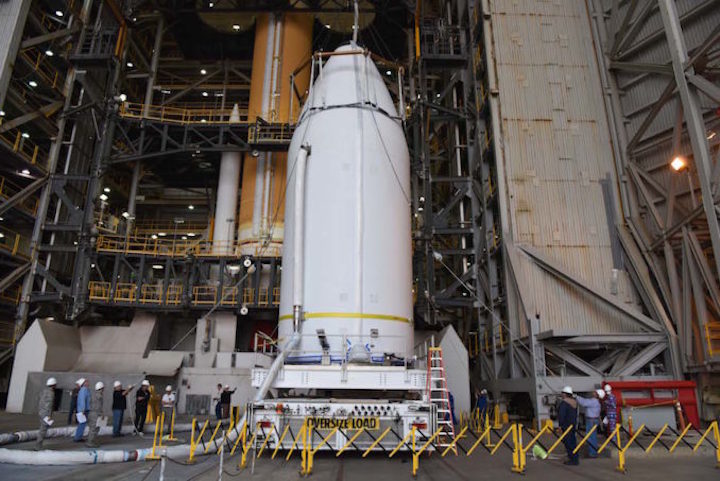




Quelle: SN, ULA
---
Update: 7.01.2018
.
Delta IV rocket set to mark first launch of the year from Vandenberg Air Force Base

The Delta IV rocket that is scheduled to launch the NROL-47 mission for the National Reconnaissance Office sits on its pad this month at Vandenberg Air Force Base. The liftoff of the United Launch Alliance-built rocket is set for 1 p.m. Wednesday.
-
A Delta IV rocket equipped with a secret payload from the National Reconnaissance Office is set to blast off from Vandenberg Air Force Base early Wednesday afternoon.
The United Launch Alliance rocket is scheduled to lift off from VAFB’s Space Launch Complex-6 during a window that will begin at 1 p.m. The launch, if it goes off as planned, would be the first of the year from Vandenberg. The mission is dubbed NROL-47.
Col. Greg Wood, the 30th Space Wing vice commander, will serve as the space launch commander.
“We are ready and eager to take on this Delta launch,” Wood said in a Friday release sent out by VAFB public affairs. “We are proud to provide this national defense capability, and every Team V member involved has tirelessly worked to ensure the launch is safe and successful.”
Vandenberg’s 4th Space Launch Squadron is in final preparations for the launch with a group of mission partners from both ULA and the NRO, which is the U.S. government’s agency in charge of designing, building, launching and maintaining America’s intelligence satellites.
“The 4th Space Launch Squadron’s mission assurance technicians, engineers, and program managers are laser-focused on ensuring that all flight hardware, infrastructure and facilities are ready to go for launch,” said Maj. Allen Varghese, the 4th Space Launch Squadron director of operations. “Our squadron has worked side by side with ULA personnel over the past several months to ensure this mission’s success.”
The Hawk’s Nest on Highway 1, about a half mile south of VAFB’s main gate, will be accessible for members of the public who wish to view the launch. The Hawk’s Nest gates will be opened at 12:15 p.m. Wednesday, according to base officials.
Quelle: LOMPOC RECORD
---
Update: 10.01.2018
.
Delta 4 rocket, clandestine spy satellite ready for liftoff from California

Technicians are putting the final touches on a United Launch Alliance Delta 4 rocket set for liftoff Wednesday from Vandenberg Air Force Base, a military base on California’s Central Coast, with a top secret spy satellite for the National Reconnaissance Office.
The 217-foot-tall (66-meter) Delta 4 rocket, boosted by a hydrogen-fueled RS-68A main engine and two strap-on solid boosters, is set for liftoff at 1 p.m. PST (4 p.m. EST; 2100 GMT) Wednesday from Space Launch Complex-6 on the remote southern edge of Vandenberg overlooking the Pacific Ocean.
The exact duration of the launch window Wednesday is classified, but it could extend up to four hours.
There are no technical concerns going into Wednesday’s countdown, but officials will keep a close watch on weather. The official forecast for Wednesday’s launch attempt calls for a 70 percent chance that conditions will not be acceptable for liftoff.
“As far as preparations for launch, everything is in place. What we’re doing right now mainly are last-minute checks,” said Lt. Col. Kenneth Decker, commander of the 4th Space Launch Squadron at Vandenberg. “As far as weather goes, that’s probably our biggest concern right now going into the final days in prep for the mission.”
A strong storm pushed through California on Tuesday, dumping heavy rain and bringing gusty winds to the state.
“Throughout the count Wednesday to include during propellant load, the winds will remain elevated and out of the north, slowly decreasing to between 15-20 gusting to 25 knots and temperatures between 54F and 59F at T-0,” an Air Force weather team wrote in an official outlook issued Tuesday. “Through the four-hour window, however, the winds will increase slightly with support from the sea breeze to 18-22 gusting to 28 knots out of the north-northwest. Max upper level winds will be out of the northwest at 85 knots from 34,000 to 36,000 feet.”
The 32-story-tall mobile gantry at the SLC-6 launch pad is scheduled to be retracted into launch position around eight hours before liftoff, but the move can only occur if ground winds are below around 30 knots, Decker said in a pre-launch interview with Spaceflight Now.
“We’re projecting fairly high winds on Wednesday with the storm moving out,” Decker said. “We’re watching that closely. So if the winds are too high, we may not even move the tower.
“With a Delta 4, we have a few more limitations because we have to fuel the rocket with liquid hydrogen and liquid oxygen,” he said.
The mobile gantry must be retracted before the start of fueling of the two-stage rocket, which is scheduled to begin around four hours before launch.
The Delta 4 is expected to head southwest from the California coastline, bound for an unusual high-inclination retrograde orbit that will allow the rocket’s top secret payload to travel in the opposite direction of Earth’s rotation.
The rocket will likely loft a radar surveillance satellite to gather all-weather, day-and-night imagery for analysis by U.S. intelligence agencies. Previous Delta 4s believed to carry NRO radar reconnaissance craft used the same “5,2” configuration of the rocket, with a 5-meter (16-foot) diameter payload fairing and two solid rocket boosters, and the rockets also arced to the southwest from Vandenberg.
But hazard notices released to mariners and pilots suggest the Delta 4 launching Wednesday will take a slightly different path, raising questions whether the payload will have a different design or function than the NRO’s earlier radar spy satellites, according to Marco Langbroek, a experienced amateur satellite tracker who lives in the Netherlands.

The mission is codenamed NROL-47.
“It’s a classified payload for the NRO,” said Maj. Allen Varghese, the Air Force’s launch director for the NROL-47 mission and director of operations at the 4th Space Launch Squadron. “We can’t go into the details of what the payload does, but it’s a national security priority, and it’s mission will ensure that the warfighters across the globe have the appropriate intel that they need to be able to support operations.”
The Delta 4 rocket for the NROL-47 mission was delivered to Vandenberg in April 2017 aboard ULA’s “Delta Mariner” transport ship after a journey from the company’s factory in Decatur, Alabama.
Ground crews erected the rocket’s two core stages and twin solid rocket boosters, built by Orbital ATK, last year. The payload fairing containing the NROL-47 spacecraft was installed in December to complete assembly of the rocket.
The flight was pushed back from Dec. 10 to complete software validation on a new common avionics system designed to fly on ULA’s Delta 4 and Atlas 5 rockets. The upcoming mission will be the first time the common avionics suite has flown on a Delta 4.
It will be the last launch of a medium-lift, single-core version of the Delta 4 rocket from Vandenberg Air Force Base. ULA is retiring the “single-stick” Delta 4 family in favor of the less expensive Atlas 5, before eventually replacing both rockets with the next-generation Vulcan launcher.
Two more single-core Delta 4s are slated to launch from Cape Canaveral.
The heavy-lift version of the Delta 4, comprising three of the rocket’s first stages bolted together, will remain in service through at least the early 2020s to deploy the NRO’s most massive satellites. Those payloads weigh too much for the Atlas 5 or SpaceX’s Falcon 9 rocket, the two other launch vehicles currently certified to haul costly U.S. military and intelligence-gathering satellites into orbit.
“This is the first Delta 4 that we’ve launched out of Vandenberg with common avionics,” Varghese said. “Common avionics is a major, multi-year effort to standardize avionics across the ULA fleet for Atlas and Delta. It streamlines hardware and launch day operations, and it’s a multi-year effort culminating with the launch on Wednesday.”
Decker said the common avionics upgrade required software changes in the ground systems at SLC-6.
The same common avionics package has already flown on several Atlas 5 missions, including the last two at Vandenberg.
The 4th Space Launch Squadron oversees Delta and Atlas rocket missions at Vandenberg, supporting up-keep on ground infrastructure, providing technical and management oversight, and coordinating the schedules and needs of all the organizations involved in a launch.
“We’re the eyes and ears on the pad as ULA processes the vehicle, and any technical issues that we foresee or that we observe, we pass that along to the (Air Force’s) Space and Missile Systems Center for all of their program managers and engineers as they determine flight certification for the vehicle,” Decker said.
The most recent launch supported by the unit was an Atlas 5 mission with the NROL-42 payload in September.
“It’s gone very well,” Capt. Alessa Makuch, lead engineer at the 4th Space Launch Squadron, said of the launch campaign. “We had L-42 here in September and then we kind of rolled straight into L-47. We were kind of working them parallel for a while, so we were very busy with both of those, and then we finally got to shift our focus directly to L-47.
“It’s been a huge combined effort to really get us to the point where we can be launching this first Delta with the common avionics,” Makuch said. “Considering all those changes that had to be made, it was a very good launch flow and I think we’re all pretty excited to be here at the end.”
Two more missions are on the 4th Space Launch Squadron’s schedule in 2018: an Atlas 5 flight in May with NASA’s InSight Mars lander, and another classified mission in October using ULA’s triple-body Delta 4-Heavy rocket.
“Any time you have a Delta mission here at Vandenberg, it’s a big deal,” Decker said. “These are all very important missions. I think, for this one, there may be a little more interest due to the fact that it’s probably the last Delta 4-Medium from SLC-6. I know that this payload is a very high priority… there’s a lot of interest in making sure that it gets to orbit safely.”
“The other thing (is) with the first use of common avionics on a Delta 4, there’s been a lot of technical interest in the vehicle,” he said.
“But from our squadron’s perspective, it’s another mission. All are high priority and we’re excited about it and a lot of work has gone into it. That’s why we’re here.”
Quelle: SN
---
Update: 11.01.2018
.
Delta IV launch delayed because of high winds
The scheduled launch of a Delta IV rocket by United Launch Alliance from Vandenberg Air Force Base on Wednesday has been delayed due to high winds, base officials announced Wednesday morning.
The launch had initially been scheduled for 1 p.m. Wednesday. It is part of the NROL-45 mission and will carry a secret payload for the National Reconnaissance Office.
Quelle: Lompoc Record
---
Update: 12.01.2018 / 22.00 MEZ
.
Start von Delta-IV mit NROL-47 Satelliten

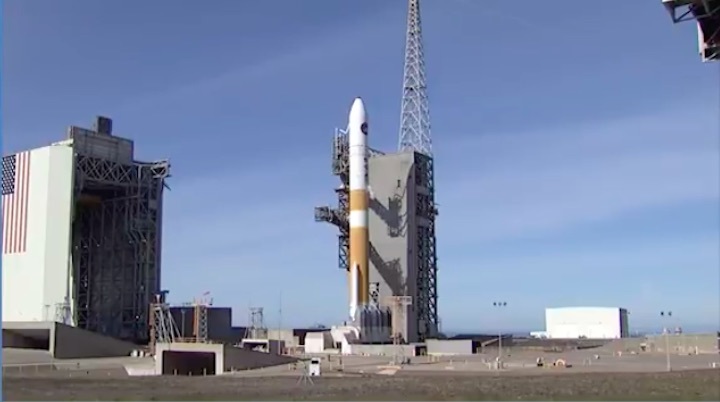





+++

+++23.11 MEZ

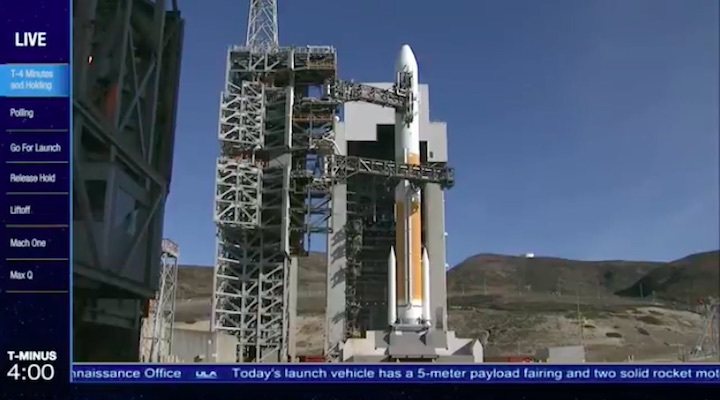



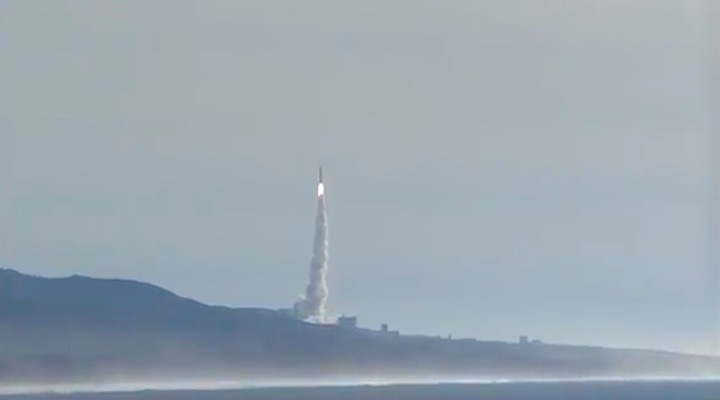






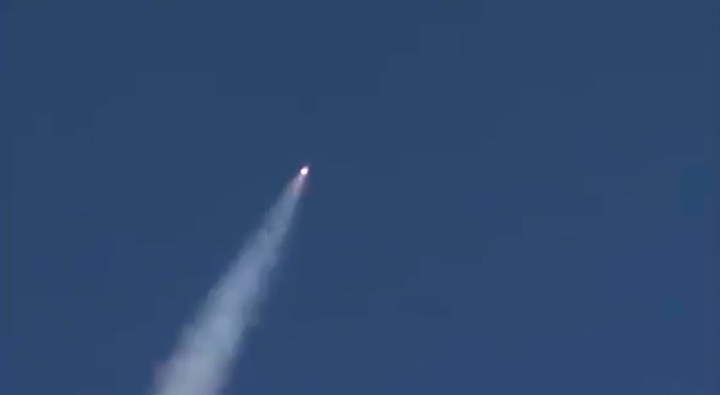
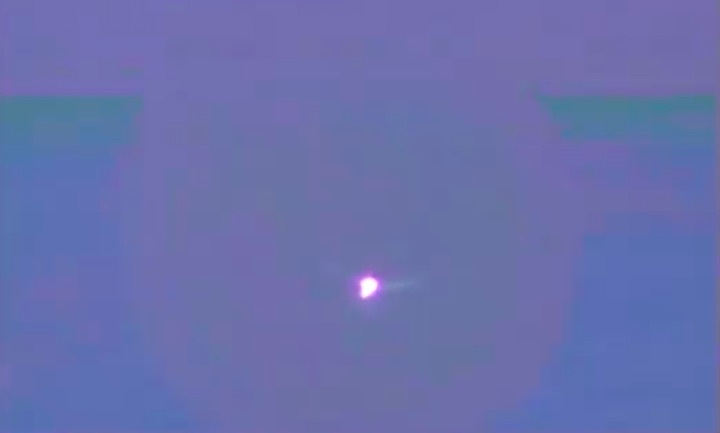
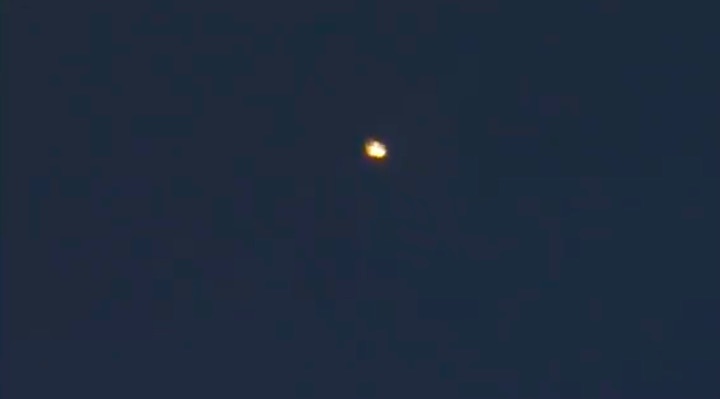


Quelle: ULA
